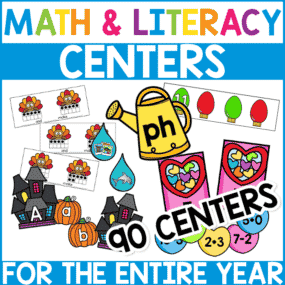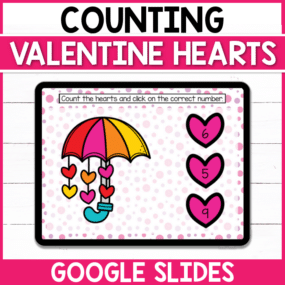This post may contain affiliate links. For more information, please see my full disclosure policy.
When it comes to exciting holidays for kids, Valentine’s Day is pretty close to the top of the list.
Candy, cards, the chance to exchange Valentines with all of their friends and classmates… What’s not to love?!
And as teachers, finding ways to work holidays like this into our lesson plans is the perfect way to build on that excitement and this Valentine’s Day one more one less counting activity is a great way to do it!
It’s perfect for small groups or even to add to your Valentine’s Day math centers and your little learners are going to be able to work on everything from one-to-one correspondence to their fine motor skills with this one activity!
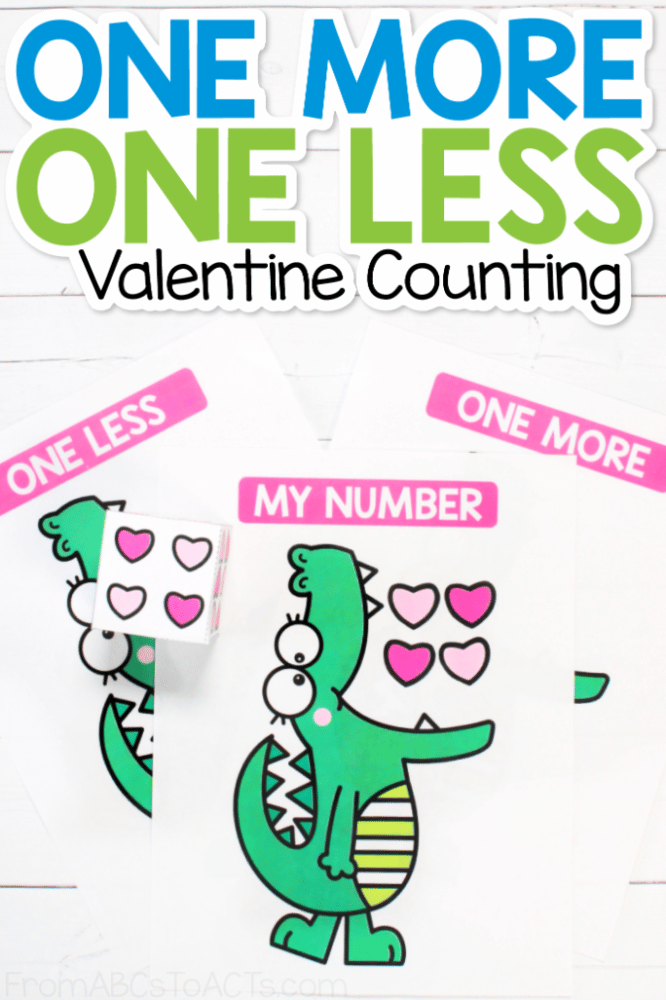
Why is one more one less important?
Learning to count is a pretty big deal.
It has to be! It’s the foundation on which the rest of your math skills rest on and it’s incredible to watch as little ones remember their numbers and begin counting in order.
But as fun as learning to count is, it’s not the extent of the important math skills that children need to be successful.
Once they’ve mastered rote counting, children need to gain a deeper understanding of the numbers that they know and the relationships between those numbers.
For example, they need to understand that five is more than three and that three is less than ten, but they also need to understand that all of those numbers can come in several different forms. The number word for five, for instance, means the same as the numeral five and that five tally marks are the same as five fingers and five pattern blocks.
Overall, the ability to understand the connections and relationships between numbers is known as number sense skills and learning one more one less is the first step in learning the number sense skills that they’ll use in more complex math down the line.
Introducing one more one less is such an easy way to show those relationships and you can even demonstrate this concept with something as simple as a number line or a few math manipulatives.
When looking right at a number line or some manipulatives in front of them, your preschool or kindergarten students can clearly see that one more means the next number in a sequence or the addition of one while one less means the previous number in the sequence, or the subtraction of one.
One More One Less Valentine Counting
Now, as I said before, you can effectively teach young children the concept of one more one less with some basic manipulatives or even a simple number line, but around here, we’re all about hands-on learning and if we can find a way to turn it into a fun activity with a holiday theme, then that is even better!
And this one more one less Valentine counting activity fits that bill perfectly!
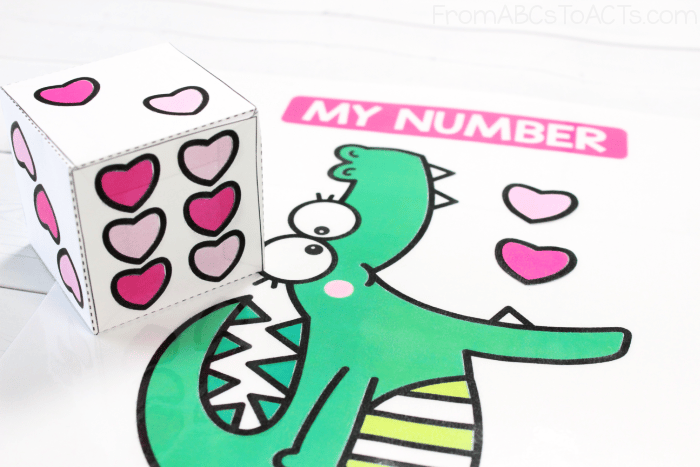
With the PDF download, you’ll find three counting mats (one for the starting number, one for one more, and one for one less) that your students will use to showcase the relationship between a set of numbers, a die, and some little hearts that they can use as counters.
You may want to laminate the mats for durability or stick them into some dry erase pockets and if you are working with younger children, start off using the single die containing numbers one through six. For older children, go ahead and print out and assemble a second die so that they can practice using larger numbers.
Using the One More One Less Valentine Counting Activity
To practice one more one less with this simple Valentine themed activity, your students will out by rolling the dice to determine their starting number.
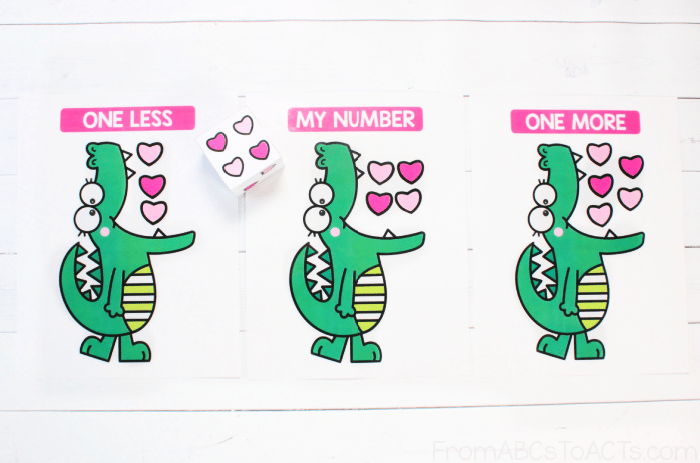
Then, they’ll use their heart counters to feed the hungry Valentine alligator the correct number.
Now, this is an excellent fine motor activity for little hands already, but if you’d like, you could also swap out the heart counters for some mini erasers, pom poms, or even some conversation hearts to really up the Valentine’s Day theme!
Once they’ve counted out their start number, they’ll then need to figure out one more and one less than that number and feed the hungry alligators on those math mats accordingly.
If you find that this is a little too easy for some of your students, try switching things up and have them start with their given number on either the one more or the one less mat and have them find the missing numbers for the other two.
No matter how you use it, your students will have so much fun feeding the hungry alligators that they won’t even realize they’re working on math problems, number recognition, and fine motor skills!
Looking for More Valentine’s Day Math Activities?
- Heart Pattern Matching File Folder Game
- Printable Valentine Number Mats
- Valentine Preschool Pack
- Conversation Heart Patterns

